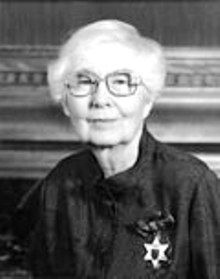
The culture of Alberta refers to the art, customs, and traditions of the people of Alberta. Alberta entered into Confederation in 1905, placing her in a tie with Saskatchewan as the country's second youngest province. Despite her short history, the province possesses a rich culture. The vastness of the land and variation of geography – which includes mountains, foothills, grassland, parkland, forest, and rockland – have served as important sources of creative inspiration across all art forms. Alberta's primary industries of farming, ranching, and petroleum also play a major part in the province's culture and identity.

Fort Calgary was a North-West Mounted Police outpost at the confluence of the Bow and Elbow rivers in present-day Calgary, Alberta, Canada. Originally named Fort Brisebois, after the outpost's first commander, the outpost was renamed Fort Calgary in June 1876.

The Glenbow Museum is an art and history regional museum in the city of Calgary, Alberta, Canada. The museum focuses on Western Canadian history and culture, including Indigenous perspectives. The Glenbow was established as a private non-profit foundation in 1955 by lawyer, businessman and philanthropist Eric Lafferty Harvie with materials from his personal collection.
Maxwell Bates LL.D was an architect and expressionist painter.

Lionel LeMoine FitzGerald L.L. D. also known as L. L. FitzGerald was a Canadian artist and art educator. He was the only member of the Group of Seven based in western Canada. He worked almost exclusively in Manitoba. Although he accepted the Group of Seven’s invitation to become a member in 1932, FitzGerald was less concerned than the rest of the group with the promotion of a unified Canadian identity. Instead he explored his surroundings, delving deeply into the forces he felt animated and united nature in order to make “the picture a living thing.”
Henry George Glyde was an English-born Canadian painter, draftsperson and art educator.

Margaret Dorothy Shelton (1915–1984) was a Canadian artist who lived nearly all of her life in Alberta. She worked in a number of mediums but is best known for her block printing.
The following is a bibliography of Alberta history.

Reta Cowley was a Canadian painter. She is known for her watercolors of the prairie country around Saskatoon, Saskatchewan, which capture the unique qualities of space and light.

Marion Florence Nicoll was a Canadian painter. She is known as one of the first abstract painters in Alberta. In 1933 she became the first woman instructor at the Provincial Institute of Technology and Art. In 1977 Nicoll became the first woman artist in the Prairies to become a member of the Royal Canadian Academy of Arts.
Gladys Johnston was a Canadian artist known primarily for her landscapes. Johnston was a self-taught painter; she was also an author, writing local and family history books and travel stories. Johnston spent most of her life in British Columbia, living in Salmon Arm from 1944 until her death in 1983. Major exhibitions of her work were held in 1988 and 2007.

William (Bill) Laing is a Scottish/Canadian artist based in Calgary, Alberta. He is known for his printmaking and sculpture.

Mary Annora Brown L.L. D. (1899–1987), known as Annora Brown, was a Canadian visual artist whose work encompassed painting and graphic design. She was best known for her depictions of natural landscapes, wildflowers, and First Nations communities in Canada. Much of her work thematically explored Albertan identity, though she remained relatively obscure in discussions of Canadian art.
Nancy Tousley is a senior art critic, journalist, art writer and independent curator whose practice has included writing for a major daily newspaper, art magazines, and exhibition catalogues.
Kim Dorland is a contemporary Canadian painter based in Toronto. He is best known for his thickly-painted, fluorescent-imbued landscapes and super-thick portraiture and his use of multiple painting mediums per canvas.

Terrance James Houle is an Internationally recognized Canadian interdisciplinary artist and member of the Kainai Nation and ancestry from the Sandy Bay Reservation, Manitoba. His Mother is Maxine WeaselFat from the Kainai Nation and Father Donald Vernon Houle from Sandy Bay Reservation in Manitoba, they are both 3rd generation Residential School attendees & reside on the Blood reservation in Southern Alberta, Canada. His work ranges from subversive to humorous absurdity to solemn and poetic artistic expressions. His work often relates to the physical body as it investigates issues of history, colonization, Aboriginal identity and representation in popular culture, as well as conceptual ideas based on memory, home, and reserve communities. Currently, He has co-directed a Short Animation Otanimm/Onnimm with his daughter Neko which is currently touring Film festivals, In Los Angeles, NYC, Toronto, New Zealand, Vancouver, Oxford & many more. Recently their short film won the prestigious Golden Sheaf Indigenous Award at Yorkton Film Festival and is Neko's First Award in Film at 17 years old.
Joice M. Hall is a Canadian artist from Alberta, now based in British Columbia. She is known primarily as a landscape painter of large panoramas.
Ronald Benjamin Moppett is a Canadian painter. He is known primarily for abstract paintings and for works in which he combines paint and collage, along with non-traditional materials. Moppett is based in Calgary, Alberta.

Janet Mitchell LL.D was a Canadian modernist painter from Alberta, known for her fantasies of Calgary in watercolours and oils.
Roland Gissing was a painter whose subject was the western Canadian landscape. His paintings are today in The Royal Collection, and other public collections.











